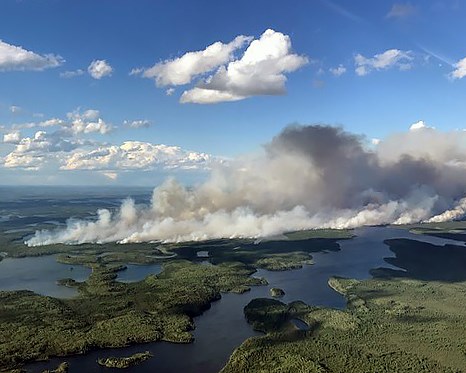DRYDEN, Ont. — The Ministry of Natural Resources and Forestry reports that two lightning-caused forest fires near the Nibinamik First Nation continue to expand.
The community, however, is under no immediate threat.
The larger of the fires burned 3,000 more hectares between Monday afternoon and Tuesday afternoon, reaching a size of 6,600 hectares.
Ministry spokesperson Chris Marchand said in an interview Wednesday from Dryden that the blaze is currently being monitored, with two crews assigned to set up sprinklers to protect any structures that may come under threat.
The fire is now burning 30 kilometres northeast of Nibinamik, and is still moving in a direction away from the community.
"The concern is primarily with smoke, which could affect air quality in the community," Marchand said.
More resources have been assigned to the smaller fire,10 kilometres to the southeast of Nibinamik, which has grown from 220 hectares on Monday to 400 hectares.
Marchand said eight crews and two bucket-equipped helicopters are deployed there.
This fire is also burning in a direction away from the community.
Nibinamik, also known as Summer Beaver, is about 500 kilometres north of Thunder Bay.
A third lightning-caused fire, Sioux Lookout fire # 49, is receiving what Marchand described as "a full response" from the MNRF.
The 90-hectare fire was discovered on Sunday, and is burning a few hundred metres north of Highway 808, about 45 kilometres southwest of the Musselwhite Gold Mine. The mine site is not presently being threatened.
Marchand said nine crews, two helicopters and two waterbombers are working on the fire with the aim of keeping the road, which leads to Weagamow Lake, passable.
There are currently 53 active fires in the MNRF's Northwest Region, but 43 of these are either under observation, being held or under control.
Fire rangers, other personnel and equipment have been dispatched to northeastern Ontario to deal with that region's more serious fire situation.
Those resources include 120 firefighters, 28 overhead staff, a logistics team, nine CL-415 waterbombers and two heavy helicopters.
